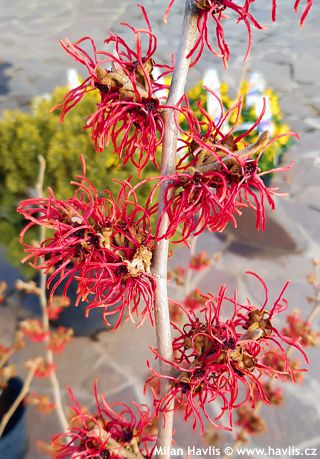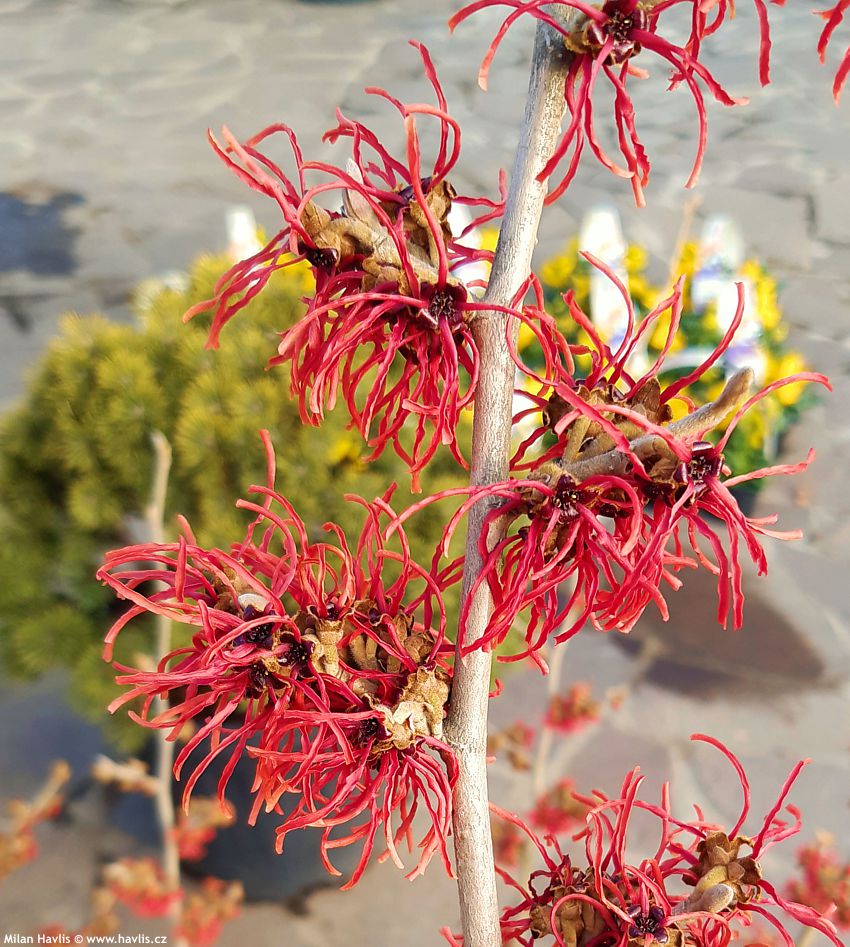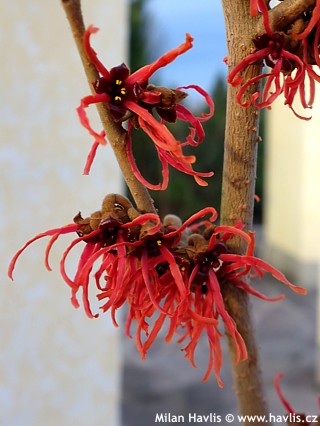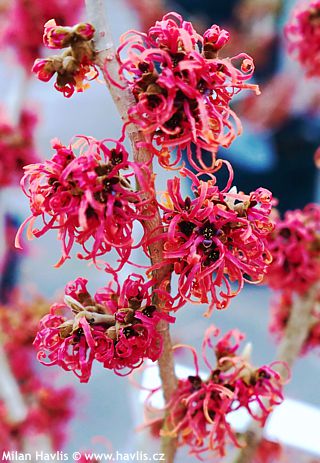Hamamelis x intermedia 'RED ROBERT' witch hazel
size/type
medium-sized shrub,taller shrub
usual height
2-3m
usual width
2-3m
leaves
deciduous broadleaf
colour of leaves
flowers
showy
colour of flowers
blooming time
January-March
location
full to partial sun
USDA zone (lowest)
5 (down to -29°C)
winter protection
for zone 5+6

for zone 7

categorized
Hamamelis
Witch hazels are unique shrubs that offer profuse flowering at times when everything else in the garden looks dull and far from cheerful.ROBERT is a beautiful, profusely flowering witch hazel that was selected in Hemelrijk Arboretum in Belgium, and named after Robert de Belder in 1998. Since its introduction it proved quite variable in flower colour so we sort individual plants into sub-varieties in order to make sure you know what you are buying.
Description of the plant:
Red Robert is a solid pastel red witch hazel selection with fringe-like flowers whose petals are narrow, long, straight (not crinkled), and come out very early, already in January if the winter is mild, and continue blooming for about 8 weeks. They are very fragrant, releasing a strong, sweet and spicy perfume on a sunny day. Another thing makes witch hazels very attractive – autumn foliage colour. The leaves are similar to hazel, rounded but larger and Robert, same as other red-flowering varieties, turn rich carmine and deep red in autumn with some yellow and orange shades.
Witch hazel is a mid-sized shrub or a small tree of an open vase shape, and thanks to its maximum size of about 3m it is ideal for even a small garden. Robert grows slower into a well-branched, strong, and upright shrub.
Witch hazel hybrids are of garden-origin. They are a cross between Asian species h.japonica and h.mollis. Grow them in acid to neutral, moist but well drained soil. They don’t tolerate lime or hard pruning when older. Sunny location or light semi-shade is best. Fully hardy to about -29°C (USDA zone 5) but exposed sites are not recommended.
Last update 19-01-2020
QUICK PRICE OVERVIEW
CURRENTLY SOLD OUT
WANT TO TRY A SIMILAR PLANT?


















